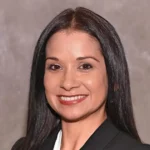The transformative K12 success achieved by several superintendents gives the phrase “bold leadership” new meaning. From district turnarounds to student mental health to academic achievement, these leaders are challenging the norms with innovation and sustainability as driving forces.

“We are breaking the myth that it takes five, six, seven years to turn around a district,” says Mike Miles, the state-appointed superintendent of the Houston Independent School District. “For the first time ever, we can say that ZIP code is not destiny.”
“Leadership Lens” is a monthly column featuring the insights of K12 leaders who are navigating common opportunities and challenges. Many of the leaders have participated in the DA Leadership Institute.
There is still plenty of work to do at Houston ISD, Miles acknowledges, but the district no longer has any F-rated schools. Two years ago, a map of the district’s D and F schools would correspond with Black, Hispanic and lower-income neighborhoods. Now, nearly 75% of Houston ISD’s students will be attending an A or B school.
“We fundamentally changed how we operate, how we staff, how we pay people, how we professionally develop people, how we monitor and evaluate, how we do the curriculum, how we do the instructional model—all of that at one time,” says Miles, who formerly served as superintendent in Dallas ISD and Colorado Springs.
The key to Miles’ reform, which he calls the New Education System, is teacher effectiveness. Teachers are guided by principals who excel at instruction, while principals receive coaching from strong executive directors.
“It also means that you have to have a curriculum that’s tied closely to instruction,” Miles said. “In other words, curriculum follows instruction, instruction doesn’t follow the curriculum, and that’s a paradigm shift for most districts.”
To counter attendance declines exacerbated by the COVID pandemic, Houston ISD schools work to provide students with quality instruction and connections to college and careers. An ‘Art of Thinking’ class, for example, covers information literacy, critical thinking and problem-solving.
High schoolers can now take an AI in the workplace elective as part of the district’s overhaul of its CTE programs. Those investments include a second career and technical education center.
“They’ve got to see some benefit to their future,” Miles said. “The strategy is to get schools back to A and B status and change the paradigm so that kids see that we’re trying to support them with high-wage, high-demand, high-skilled jobs and careers of the future, and college for those who want to go to college.”
Riding the ‘progress train’ to K12 success
Superintendent Rosa Diaz says she is trying something “radical” this year at Carteret Public Schools, a small, urban New Jersey district just outside New York City.

“We’re actually going to pause and continue the course on this progress train we have going on,” she explains. “We really made some significant gains last year with the curricula and supports that we’ve put in place.”
That progress is anchored in the basics; more specifically, focusing on the fundamentals of writing and math in elementary school. She also hired a junior high writing teacher.
During her transition from vice principal to principal and superintendent, Diaz introduced concepts such as professional development around common planning. The goal was a culture shift that relied on building strong relationships.
“I knew that if I started building trust with teachers, if I gained their buy-in, that I could slowly start making the changes that I know would improve the district,” Diaz points out. “Once I came into the role as superintendent and made sure that I was building those relationships with people at all of the schools, they could see that I’m here to really help.”
She also leveraged those relationships to help pass the first referendum in 60 years to construct a new junior high school and break ground on a new pre-K center. Trust gives a superintendent credibility to innovate.
“Your board members hired you because they thought you had the potential and the skill set, so don’t be afraid to challenge them,” she says. “And be transparent. Be intentional about explaining the why, so that there are never questions as to what your intentions are.”
A reflection of the superintendent
At Shelbyville Central Schools in Indiana, Superintendent Matt Vance and his team have focused new initiatives on three areas of K12 success: mental health, staff support and curriculum alignment.
“Funding is a huge concern, so we look at what we can do for our students. What can we do for our staff?” says Vance, who has led Shelbyville for three years after serving as superintendent in another district. “At the same time, we’re living within our financial means and doing the absolute best we can. It is a bit of a balancing act.”

Providing mental health care for students is a key component of Vance’s safety strategy. He has hired a new counselor, added behavioral interventionists and contracted with outside agencies to provide care to students at all grade levels.
All staff members are also trained in Trust-Based Relational Intervention, or TBRI.
“If we can look more at how we correct our students’ behavior and get them the resources they may need, then we feel like, in the long run, that will take care of some of what we do in terms of discipline and punishment,” he explains.
Last year, the district added a staff daycare program to the preschool building. It’s an affordable option he hopes will help retain staff. It also opens the possibility for a student to attend the district from age one through high school.
“A lot of times we say, ‘What can we do that’s different? What can we do that some others don’t have to try to help our staff members and, in turn, help our kids?'”
The district recently finished a multiyear project to map its curriculum so instruction is aligned across all grade levels. It allows existing teachers to keep pace and helps new teachers get started, as the map is already in place, Vance points out.
“I am an energetic, student-centered leader, looking to model a professional and a caring attitude,” he says. “The culture of a district is a reflection of the superintendent, so I try to establish a positive culture where people want to be.”
Who’s No. 1? Ranking the nation’s best school districts
Find your next story in our slideshow



